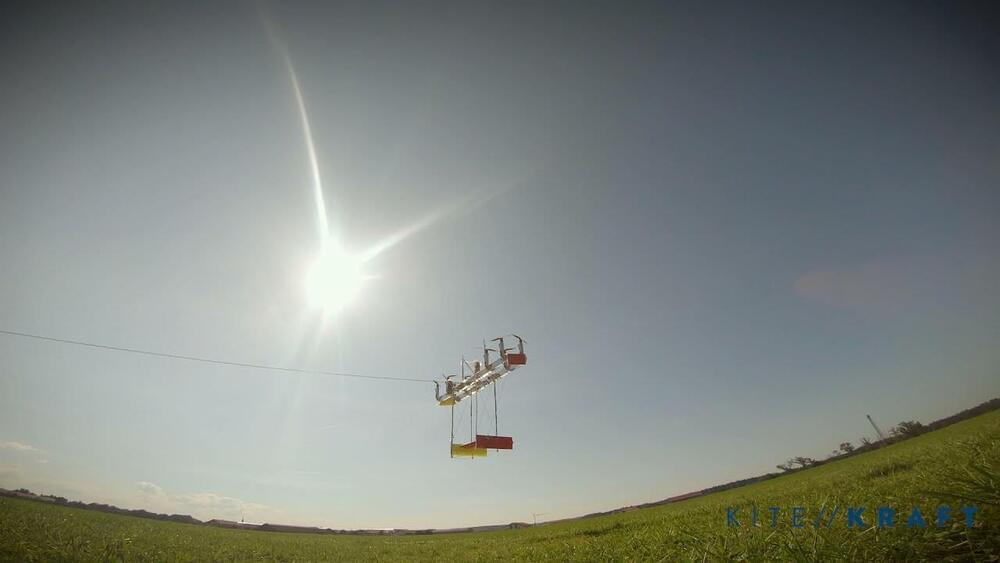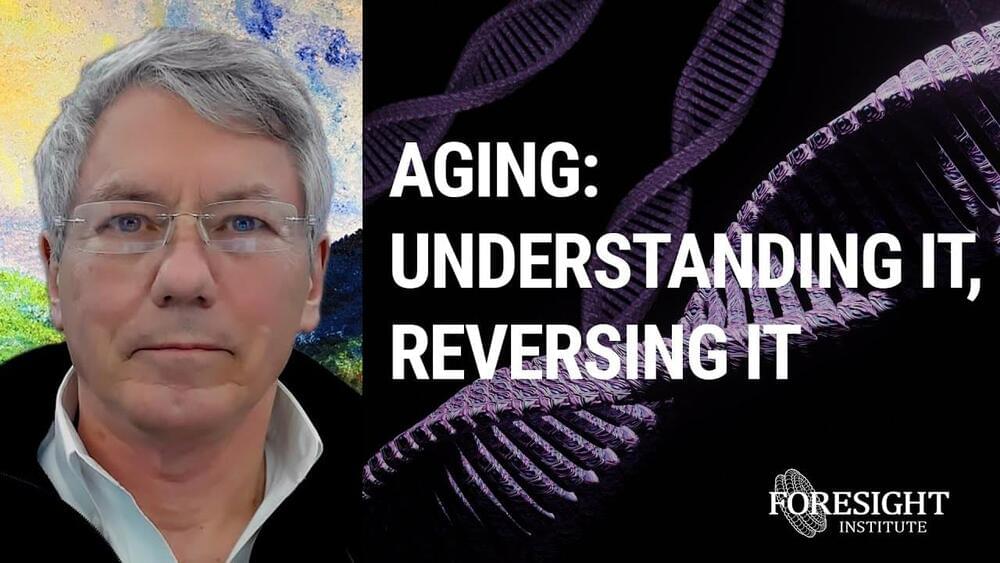Apr 12, 2022
The microchip implants that let you pay with your hand
Posted by Shubham Ghosh Roy in category: computing
You can now get a payment chip injected beneath your skin, turning you into a human bank card.
You can now get a payment chip injected beneath your skin, turning you into a human bank card.
Quantum computers, machines that leverage quantum states to perform computations and store data, could soon revolutionize the computing industry, achieving significantly greater speeds and performance than existing computers. While countless companies worldwide, including Google and IBM as well as smaller start-ups, have started working on quantum technologies, the exact architecture that will lead to their mass production remains unclear.
Researchers at Leibniz University Hannover have recently conducted a theoretical study investigating the possibility of realizing flying-qubit gates for quantum computers that are insensitive to the wave shapes of photons, and also fully preserve these shapes during processing. Their paper, published in Physical Review Letters, could serve as the basis for the development of new gates that can process entangled photonic wave packets more effectively than unentangled ones.
“There are several candidate architectures for the development of quantum technology, including superconductors, ion traps, solid state, optical, and so on,” Ihar Babushkin, one of the researchers who carried out the study, told Phys.org. “Regardless of what architecture we consider, photons, the quanta of light, will play an important role, since in almost all architectures the mediators between quantum information bits (qubits) are photons.”
Renting space and IP addresses on a public server has become standard business practice, but according to a team of Penn State computer scientists, current industry practices can lead to “cloud squatting,” which can create a security risk, endangering sensitive customer and organization data intended to remain private.
Cloud squatting occurs when a company, such as your bank, leases space and IP addresses—unique addresses that identify individual computers or computer networks—on a public server, uses them, and then releases the space and addresses back to the public server company, a standard pattern seen every day. The public server company, such as Amazon, Google, or Microsoft, then assigns the same addresses to a second company. If this second company is a bad actor, it can receive information coming into the address intended for the original company—for example, when you as a customer unknowingly use an outdated link when interacting with your bank—and use it to its advantage—cloud squatting.
“There are two advantages to leasing server space,” said Eric Pauley, doctoral candidate in computer science and engineering. “One is a cost advantage, saving on equipment and management. The other is scalability. Leasing server space offers an unlimited pool of computing resources so, as workload changes, companies can quickly adapt.” As a result, the use of clouds has grown exponentially, meaning almost every website a user visits takes advantage of cloud computing.
A completely intact dino-drumstick complete with skin and more. Just need 11 ancient herbs and spices.
The Tanis fossil site located in North Dakota in the United States of America is currently one of the most interesting places on Earth. Well that’s if you like dinosaurs and uncovering the ancient mysteries of our planet. Maybe you’re more into ancient computers that predict eclipses (opens in new tab). If not, uh, why not check out some of our hot Elden Ring content (opens in new tab)? We’ve got guides on the best builds (opens in new tab), how to survive (opens in new tab), and all sorts of stuff.
Ok, now that we’ve gotten rid of those people, back to the dinosaurs.

Nearly a dozen companies are betting on computer-controlled, airborne wind energy to electrify the future.
By Kurt Kleiner.
Continue reading “Could high-flying kites power your home?” »
The CEO of the company behind the world’s biggest storage device spills the beans.
A record-breaking 200TB solid state drive could be announced by Nimbus Data before the end of the year, the company has hinted.

Dr Fossel talking about dementia, telomeres, and clarifying some experimental myths.
Foresight Biotech & Health Extension Meeting sponsored by 100 Plus Capital.
Program & apply to join: https://foresight.org/biotech-health-extension-program/
Continue reading “Michael Fossel | Aging: Understanding it, Reversing it” »
Computers may be growing smaller and more powerful, but they require a great deal of energy to operate. The total amount of energy the U.S. dedicates to computing has risen dramatically over the last decade and is quickly approaching that of other major sectors, like transportation.
In a study published online this week the journal Nature, University of California, Berkeley, engineers describe a major breakthrough in the design of a component of transistors—the tiny electrical switches that form the building blocks of computers—that could significantly reduce their energy consumption without sacrificing speed, size or performance. The component, called the gate oxide, plays a key role in switching the transistor on and off.
“We have been able to show that our gate-oxide technology is better than commercially available transistors: What the trillion-dollar semiconductor industry can do today—we can essentially beat them,” said study senior author Sayeef Salahuddin, the TSMC Distinguished professor of Electrical Engineering and Computer Sciences at UC Berkeley.
Santiago Ramón y Cajal, a Spanish physician from the turn of the 19th century, is considered by most to be the father of modern neuroscience. He stared down a microscope day and night for years, fascinated by chemically stained neurons he found in slices of human brain tissue. By hand, he painstakingly drew virtually every new type of neuron he came across using nothing more than pen and paper. As the Charles Darwin for the brain, he mapped every detail of the forest of neurons that make up the brain, calling them the “butterflies of the brain”. Today, 200 years later, Blue Brain has found a way to dispense with the human eye, pen and paper, and use only mathematics to automatically draw neurons in 3D as digital twins. Math can now be used to capture all the “butterflies of the brain”, which allows us to use computers to build any and all the billons of neurons that make up the brain. And that means we are getting closer to being able to build digital twins of brains.
These billions of neurons form trillions of synapses – where neurons communicate with each other. Such complexity needs comprehensive neuron models and accurately reconstructed detailed brain networks in order to replicate the healthy and disease states of the brain. Efforts to build such models and networks have historically been hampered by the lack of experimental data available. But now, scientists at the EPFL Blue Brain Project using algebraic topology, a field of Math, have created an algorithm that requires only a few examples to generate large numbers of unique cells. Using this algorithm – the Topological Neuronal Synthesis (TNS), they can efficiently synthesize millions of unique neuronal morphologies.
In 1,832, Charles Darwin witnessed hundreds of ballooning spiders landing on the HMS Beagle while some 60 miles offshore. Ballooning is a phenomenon that’s been known since at least the days of Aristotle—and immortalized in E.B. White’s children’s classic Charlotte’s Web—but scientists have only recently made progress in gaining a better understanding of its underlying physics.
Now, physicists have developed a new mathematical model incorporating all the various forces at play as well as the effects of multiple threads, according to a recent paper published in the journal Physical Review E. Authors M. Khalid Jawed (UCLA) and Charbel Habchi (Notre Dame University-Louaize) based their new model on a computer graphics algorithm used to model fur and hair in such blockbuster films as The Hobbit and Planet of the Apes. The work could one day contribute to the design of new types of ballooning sensors for explorations of the atmosphere.
There are competing hypotheses for how ballooning spiders are able to float off into the air. For instance, one proposal posits that, as the air warms with the rising sun, the silk threads the spiders emit to spin their “parachutes” catch the rising convection currents (the updraft) that are caused by thermal gradients. A second hypothesis holds that the threads have a static electric charge that interacts with the weak vertical electric field in the atmosphere.
